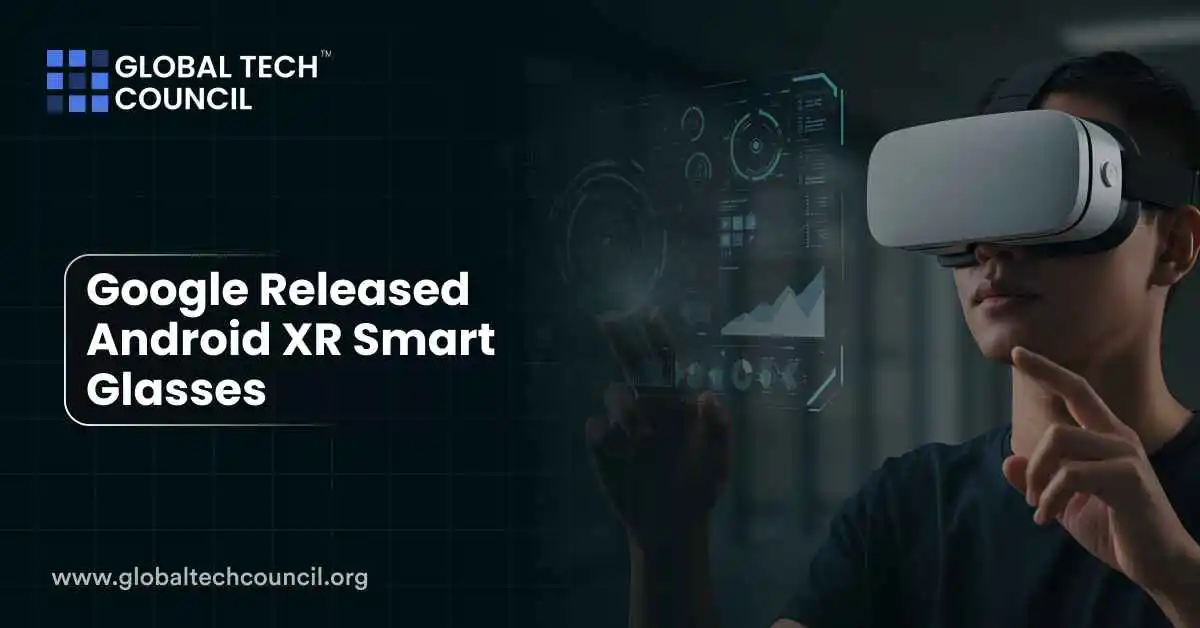
These smart glasses aren’t just a concept. Google is partnering with Samsung, Qualcomm, and other brands to roll them out soon as part of a broader extended reality (XR) push.
What Are Android XR Smart Glasses?
Android XR smart glasses are part of Google’s vision for ambient computing — where information is delivered when and where you need it without interrupting your flow. They combine sensors, voice input, and display overlays to help users interact with the world around them using AI.
Unlike bulky headsets, these glasses resemble everyday eyewear. They include micro cameras, microphones, open-ear speakers, and tiny projectors that can show information without a screen.
Key Features and Capabilities
These glasses are built for real-world use, not just tech demos.
Smart Functions
- Real-time language translation with subtitles
- Turn-by-turn walking or driving directions
- Contextual info on places, objects, or contacts
- Hands-free photo taking, video recording, or calling
Gemini AI Integration
- Understands voice queries in natural language
- Offers suggestions and follow-ups
- Learns from your habits and adapts prompts
Design and Comfort
- Frames designed in collaboration with Warby Parker and Gentle Monster
- Lightweight and wearable for long periods
- Battery life optimized for full-day usage
Google Android XR Smart Glasses vs Other Smart Glasses
| Glasses | Key Feature Highlights | Target Audience |
| Android XR | Translation, navigation, Gemini AI, fashion-focused | General users and travelers |
| Ray-Ban Meta | Camera, audio, social sharing | Content creators |
| Nreal Air | AR visuals, screen casting | Gamers and media consumers |
| Vuzix Blade | Enterprise tasks, on-field support | Industry professionals |
Use Cases for Everyday Users
Android XR glasses are being built with practical day-to-day activities in mind:
Travelers
- Translate signs or conversations instantly
- Explore cities without pulling out your phone
Commuters
- Get directions or traffic updates
- See calendar reminders while walking
Professionals
- View meeting info or take notes in real-time
- Capture key moments without disrupting the moment
Educators and Presenters
- Overlay speaker notes or real-time transcripts
- Switch slides with gestures or voice
These use cases could become more powerful if combined with foundational knowledge in Deep Tech certification, which helps you understand how these tools are trained and applied.
Advantages of Google Android XR Smart Glasses
| Benefit | Why It Matters |
| Hands-Free Interaction | Keeps your hands available while still accessing info |
| Always-On AI Help | You don’t need to unlock or open an app |
| Seamless Real-World Info | AI adapts based on environment and time |
| Wearable Comfort | Stylish and practical — not just a tech gadget |
Early Rollout and Availability
Android XR smart glasses are currently in early-access testing with Google’s developer partners. Broader availability is expected in 2025, with Samsung and Qualcomm supporting the XR hardware ecosystem.
This isn’t just about new hardware. Google is also working on its Flow platform and Gemini models to power these wearables. Developers and marketers who want to build for or promote this ecosystem would benefit from a Marketing and Business Certification that covers applied AI use cases in consumer products.
Future of Android XR Glasses
Expect tighter integration with Android phones, Chrome OS, and smart home tools. Google is already testing gesture control, voice filters, and even emotion-aware responses.
In the near future, your glasses might:
- Suggest talking points before a meeting
- Highlight key areas in real-time while traveling
- Alert you about nearby risks or promotions
Professionals working on predictive systems or real-time feedback loops may want to pair their experience with a Data Science Certification to make the most of wearable data streams.
Final Thoughts
Google’s Android XR smart glasses are more than a tech experiment — they’re a glimpse of how AI will blend into our daily lives. From accessibility and travel to productivity and learning, these glasses bring contextual computing closer to reality.
By making it wearable, lightweight, and socially acceptable, Google may have cracked the code for everyday augmented intelligence. If you’re a developer, digital marketer, or just someone curious about wearable AI, this is a space to watch closely.